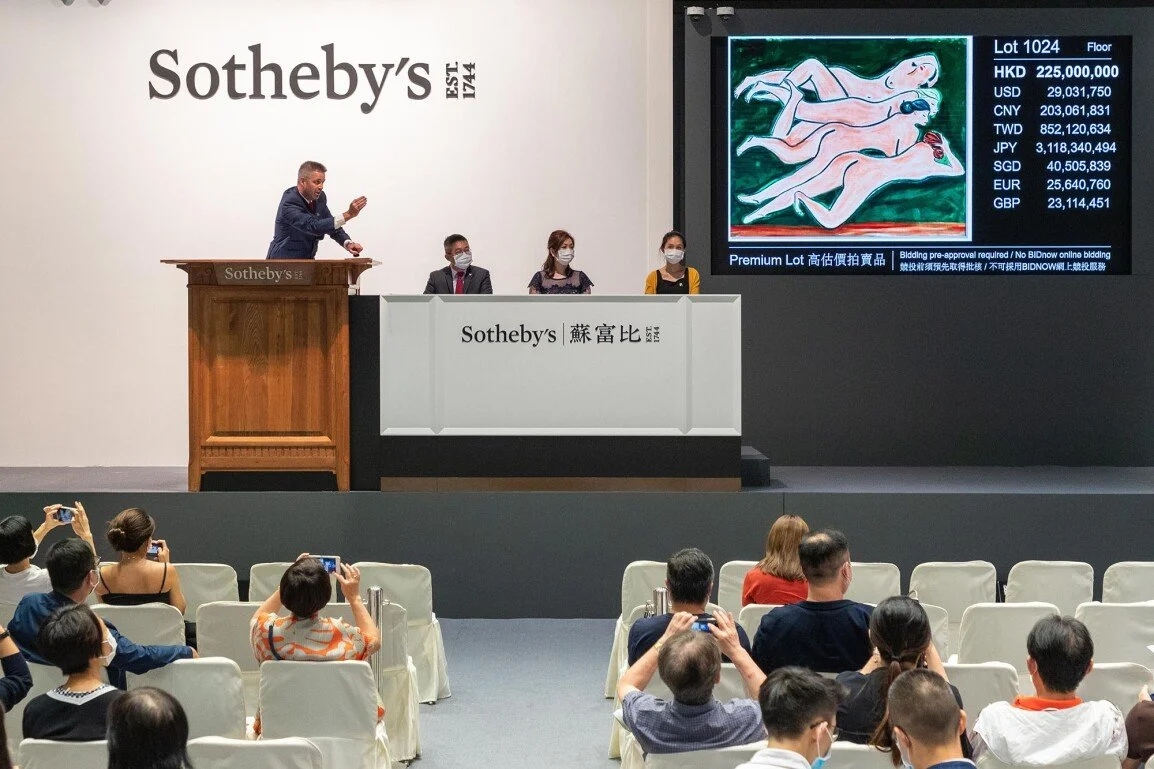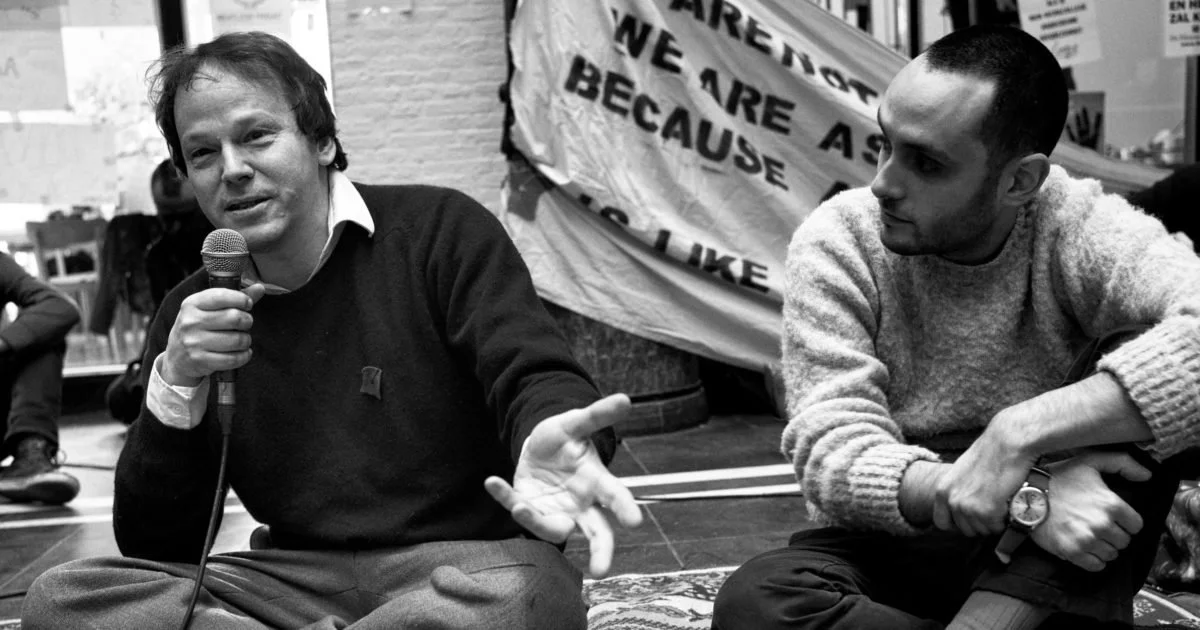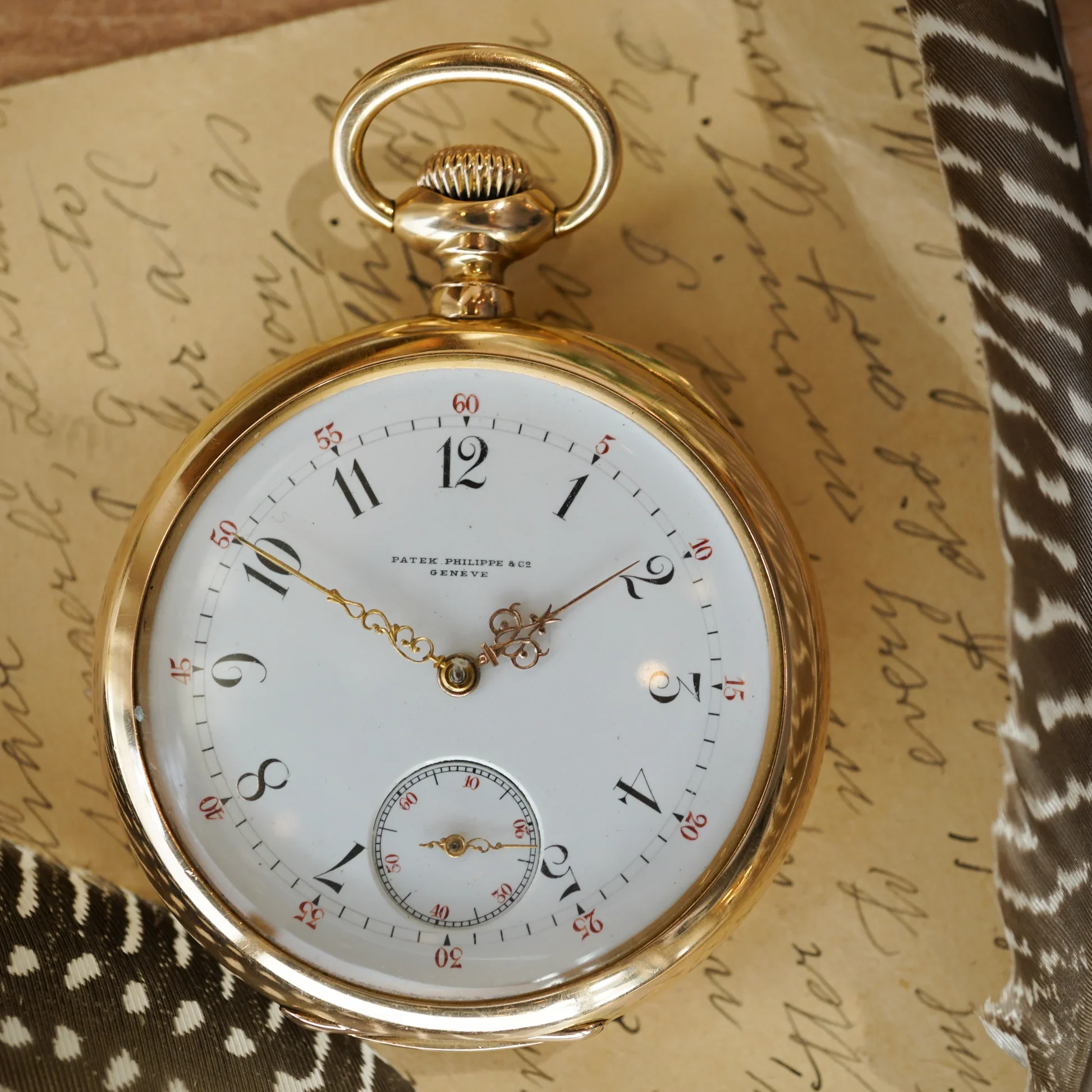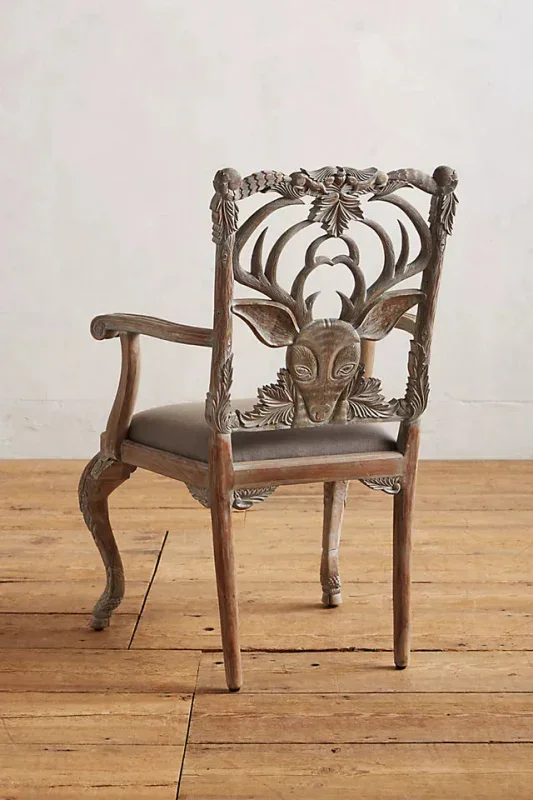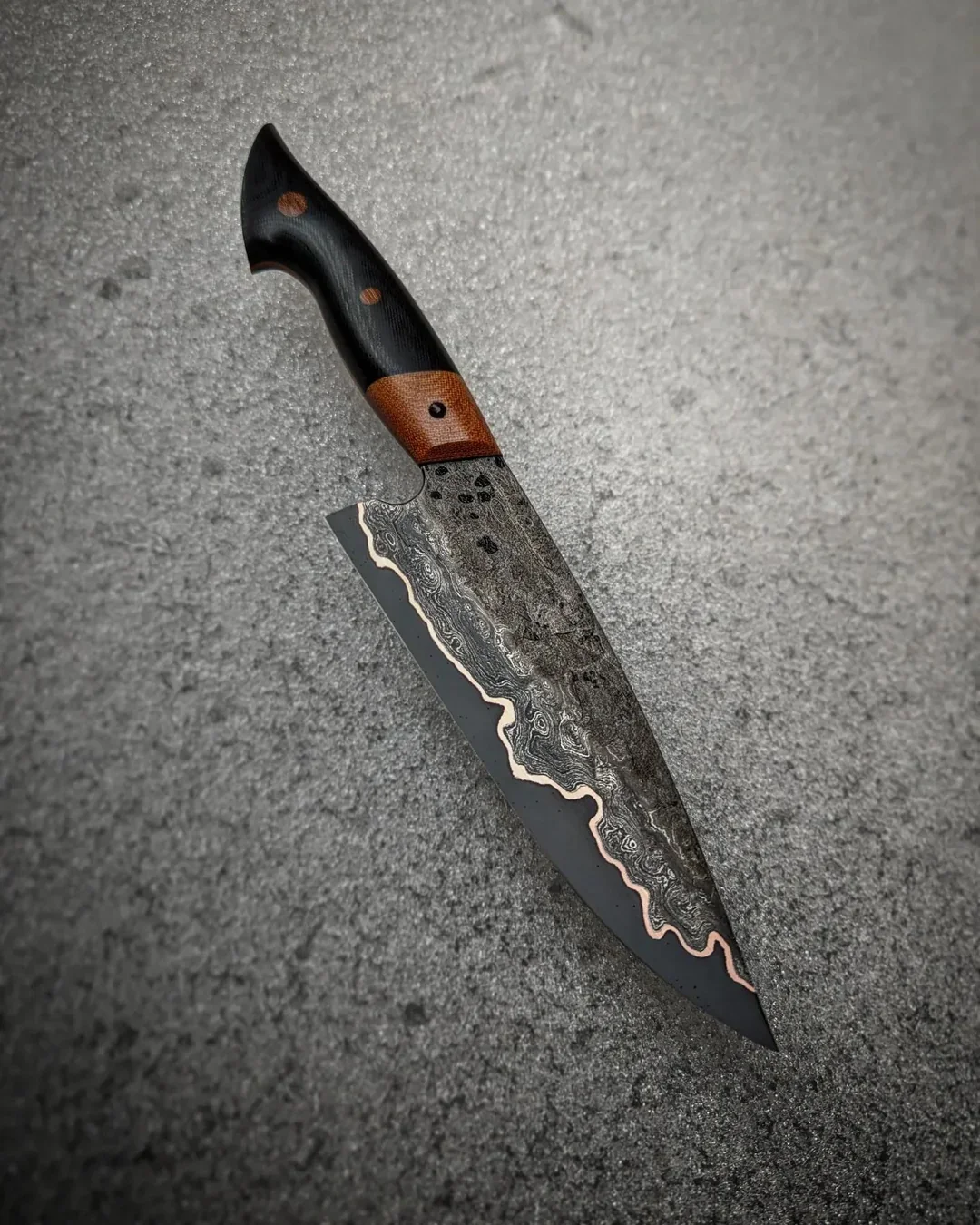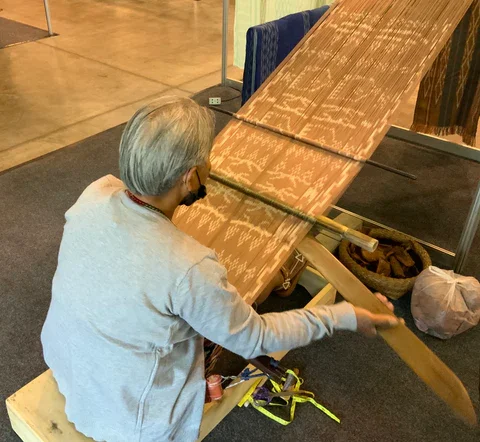Value Beyond Price: David Graeber and the Political Economy of Post-Luxury Objects
The global luxury market, for decades a bastion of seemingly inexhaustible growth and cultural authority, has entered a period of profound crisis. This is not merely a cyclical downturn but a structural exhaustion, a moment of reckoning in which the foundational logic of luxury value is being called into question. The symptoms are both quantitative and qualitative, pointing toward a system that has, in its relentless pursuit of scale, hollowed out the very sources of its desirability. To understand the emergence of a new paradigm—Post-Luxury Conceptual Functional Art (PLCFA)—one must first diagnose the advanced state of decay in the old.
The Quantitative Slowdown
Beneath the quantitative data lies a more profound qualitative crisis, a phenomenon aptly termed "luxury fatigue" which is symptomatic of a broader cultural State of Exhaustion. This is a growing weariness among consumers, both wealthy and aspirational, with the omnipresence and homogeneity of prestige brands. The crisis stems from a fundamental contradiction: the industrial-scale production and distribution of objects whose value is predicated on rarity and exclusivity. This paradox is fueled by three primary factors:
Hyper-availability
The economic model of major luxury houses has shifted from preserving exclusivity to maximizing volume. With flagship stores in every major city and ubiquitous online availability, brands have become commonplace, a direct contradiction of luxury's core promise of inaccessibility.
Aesthetic Standardization
Social media has accelerated the dissemination of trends, leading to a visual homogeneity across collections. Discerning consumers recognize cross-cutting themes, from oversized logos to seasonal color palettes, creating a "déjà vu effect" that diminishes any perception of uniqueness.
The Rise of 'Dupes
he proliferation of high-quality replicas raises a critical question: if the appearance is identical, why pay the luxury price? This phenomenon reveals the extent to which brands have over-invested in visual codes—what semioticians call "sign-value"—at the expense of substantive quality, craftsmanship, or narrative.
The traditional luxury object has been defined not by its utility (its use-value) but by its sign-value—its capacity to signify wealth, status, and taste through a logo or recognizable design. Luxury, in this framework, is a "specific kind of sign value, produced in specific narratives and used in processes of stratification". However, when the sign becomes hyper-available and its aesthetic codes are standardized and easily copied, its ability to signify distinction collapses. The result is a "weakened value proposition". Consumers are no longer convinced that the price tag corresponds to a believable narrative of rarity or superior craftsmanship, leading to a widespread sentiment that luxury goods are simply "overpriced", a crisis perfectly captured by The Miu Miu Problem. The sign, detached from any tangible substance, has become an empty signifier.
The glut of hyper-available, aesthetically standardized luxury goods and their ubiquitous 'dupes' signals a deep crisis: a 'luxury fatigue' where sign-value has become detached from any believable narrative of rarity or craftsmanship.
This dynamic is not merely a shift in consumer preference but a structural response to the object's loss of meaning. The documented pivot in consumer spending from luxury goods toward luxury experiences—such as travel, wellness, and fine dining—is a search for the very qualities the modern commodity has lost: authenticity, personal narrative, and inalienability. An experience, unlike a mass-produced handbag, is inherently unique to the individual. It cannot be easily replicated, exchanged, or commodified in the same way. It represents an unconscious attempt to reclaim a form of value that resists the logic of the market.
Parallel Crisis: The Speculative Art Market's 'Narrative Breakdown'
A powerful parallel to the crisis in luxury can be found in the contemporary art market. For decades, this market has functioned as a "myth-making machine," selling not just artworks but "stories, symbols, [and] projections". Its value system is built on a form of "collective belief" and speculative frenzy, where prices often have little connection to the intrinsic qualities of the work itself. This system, like luxury, is now showing signs of exhaustion, with slowing auctions and gallery closures.
Much like the luxury market, the contemporary art market, seen here in a high-stakes auction, operates on a speculative logic where value is driven by 'collective belief' and inflated prices, often leading to a 'narrative breakdown' where meaning declines as numbers soar.
Crucially, this collapse is being diagnosed not merely in economic terms but as a "narrative breakdown". The story that once gave value its meaning has been lost. The market has come to mirror "the very speculative logic it once claimed to critique," leading to a situation where "prices rose, but meaning declined", a phenomenon seen in the market reception of artists like Jadé Fadojutimi. When price no longer represents quality and "numbers lose their narrative content," the market becomes a language without syntax, and the collective faith that underpins it evaporates.
This parallel is instructive. It reveals that the crisis facing luxury is not unique but is symptomatic of a broader logic in late-stage capitalism: the creation of value systems so detached from tangible human action, labor, and meaning that they are inherently unstable and prone to collapsing into a crisis of belief. The exhaustion of the luxury market is the exhaustion of a particular way of making meaning.
The fundamental opposition between this exhausted traditional system and the emerging Post-Luxury (PLCFA) alternative can be understood across several key axes. Where the traditional luxury system's primary value driver is sign-value—the status conveyed by brand and price—the PLCFA system locates value in narrative, including the object's story, ethical provenance, and craft. This distinction informs their underlying economic logics. Traditional luxury operates on the principle of commodity exchange, where objects are defined by their alienability and market price. In contrast, the PLCFA system aligns with a gift logic, treating objects as inalienable possessions whose value is tied to relationships and history.
This divergence extends to the relationship with the object itself. The traditional model promotes consumption and ownership, treating the object as a possession to be acquired. The PLCFA model reframes this relationship as one of stewardship and custodianship, where the owner is a temporary guardian of the object's story. Consequently, their temporalities are opposed: traditional luxury is trend-driven and disposable, designed for obsolescence, while PLCFA objects are created for permanence, intended to be trans-generational. Finally, the source of meaning in each system is distinct. For traditional luxury, meaning is externally validated by the market. For PLCFA, meaning is generated internally, through personal and social connection to the object.
The Anthropological Foundation: David Graeber's Social Theory of Value
The anthropologist David Graeber, whose work on the social creation of value provides a powerful framework for deconstructing the luxury market and understanding the foundations of Post-Luxury Conceptual Functional Art.
To construct a viable alternative to the exhausted luxury paradigm, a more robust theory of value is required—one that moves beyond the narrow confines of neoclassical economics. The work of the late anthropologist David Graeber provides precisely such a framework. His synthesis of anthropological, economic, and political thought offers a powerful lens through which to understand how value is socially created, maintained, and, ultimately, contested.
Value as Meaningful Action
Graeber’s central thesis is a radical departure from conventional economic thought. He argues that value is not an intrinsic property of an object, nor is it simply a reflection of subjective desire determined by supply and demand. Instead, value is fundamentally social. Graeber proposes a synthetic definition: value is "the way people represent the importance of their own actions to themselves". It is the proportion of a society's total creative energy invested in producing and maintaining something, whether that something is a physical object, a social institution, or a moral principle. In this view, value is meaning created in action. When we deem something "valuable," we are making a social judgment about the importance of the human efforts that brought it into being and sustain its existence.
This framework integrates what are often treated as three separate domains of value: the economic (market price), the sociological or moral (what is good or desirable), and the linguistic (value as meaningful difference, as in Saussurean linguistics). Graeber contends that these are not distinct concepts but different facets of a single underlying system of meaning-making through which human societies define what is worthwhile.
The 'Value' vs. 'Values' Distinction
A critical element of Graeber's analysis is his deconstruction of the modern separation between economic 'value' and moral 'values'. The fact that the same word is used to describe the market price of a commodity and what is considered ultimately important in life is not a coincidence; it points to a "hidden level where both come down to the same thing". He argues that this conceptual split is a historical artifact of capitalism and the commodification of labor.
In pre-capitalist or non-market societies, these two senses of value are often inseparable. In a market society, however, a sharp line is drawn. Money becomes the universal medium for expressing 'value' in the economic sense, creating a clear frontier between what has been commodified and what remains outside that relationship. 'Values'—concepts like love, honor, or justice—are defined precisely by the fact that they ought not to have a price attached. This division allows market logic to operate in its own sphere, seemingly detached from moral considerations. The "hollowness" of the traditional luxury market, as chronicled by critics like Dana Thomas, can be understood as a direct consequence of this schism: it is a system that relentlessly maximizes economic 'value' (price) while systematically evacuating the object of the moral 'values' (craft, integrity, human connection) that might make it truly meaningful.
Critique of Market Fetishism
Building on the intellectual traditions of Karl Marx and Marcel Mauss, Graeber offers a potent critique of how market systems obscure the social origins of value. In a market economy, the products of human labor confront their producers as alienable commodities. The price of these commodities appears to be an objective property of the things themselves, determined by the impersonal forces of the market. This is the essence of what Marx termed "commodity fetishism."
Graeber extends this analysis, arguing that money and commodities act as a kind of symbolic system through which the importance of our own collective actions is reflected back at us, but in a distorted, alienated form. The object itself—the diamond, the handbag, the work of art—seems to be the source of the very value that human action and desire created. This creates a fundamental disconnect between the intention and labor of the maker, the social relationships involved in production, and the object's final price. The market erases the history of the object, presenting it as a pure, abstract commodity ready for exchange.
This anthropological understanding of value is not a neutral academic observation; it is an inherently political one. If value is the social representation of the importance of human actions, then any struggle over what a society deems "valuable" is necessarily a political struggle over which kinds of human actions and which forms of human creativity are considered important. The proposal of a new system of value, such as that embodied by PLCFA, is therefore not merely an aesthetic or commercial project. It is a political act that asserts the importance of certain actions—artisanal craft, ethical sourcing, long-term stewardship—over others, such as marketing, speculation, and mass production. It is an attempt to reclaim value from the abstract logic of the market and re-ground it in tangible, meaningful human practice.
Graeber as the Definitive Framework for Post-Luxury Conceptual Functional Art (PLCFA)
The contemporary luxury market is in a state of quiet rebellion. Consumers are experiencing a palpable "price fatigue," a growing disillusionment with a system where brand status has become radically decoupled from substantive worth. This is more than a market correction; it is a crisis of meaning, a rejection of objects whose value is derived from the abstract logic of marketing and speculation rather than from tangible human qualities of craft, narrative, and purpose. In this moment of systemic exhaustion, a new paradigm is emerging: Post-Luxury Conceptual Functional Art (PLCFA). This movement represents a deliberate turn toward meaningful objects designed with both function and philosophy at their core. Yet, to fully grasp the significance of this shift, a theoretical framework is needed that can move beyond the limited vocabulary of economics and marketing.
The work of the late anthropologist David Graeber, a pivotal thinker on the social creation of value, provides this essential framework. His theories offer not just a critique of the market's failings but a coherent, anthropological language for understanding and validating the principles of Post-Luxury. This article argues a central thesis: David Graeber's work on value provides the indispensable anthropological key to deconstructing the arbitrary logic of the traditional luxury market and, in turn, for establishing the principles of PLCFA as a meaningful and sustainable alternative. By applying Graeber's lens, one can see that PLCFA is not merely a new aesthetic trend but a profound effort to re-embed our relationship with objects in a logic of meaning, not a logic of the market.
Deconstructing the Myth of Market Value
The foundational myth of the modern market is that value is an objective, intrinsic quality of a thing, discovered by the impersonal forces of supply and demand. David Graeber's work systematically dismantles this premise. Drawing on a deep history of anthropological thought, he argues that value is never inherent; it is always the product of human actions, beliefs, and social relationships. Value, in his formulation, is the social recognition of meaningful human effort. What a society "values" is a reflection of what it collectively considers to be a worthy investment of its creative energies.
The contemporary luxury market operates by systematically obscuring this fact. It creates a fundamental disconnect between the labor and intention of an object's creator and its final price. The value of a luxury handbag is determined less by the hours of skilled labor involved and more by the millions spent on advertising campaigns, celebrity endorsements, and the maintenance of an aura of exclusivity. This creates a system of fetishism, where the brand logo—the sign—appears to be the magical source of value, erasing the human hands and social histories behind the object.
This dynamic finds its most extreme expression in the speculative contemporary art market, a useful parallel for understanding luxury's own "narrative breakdown". In the art world, the disconnect between price and the material reality of the object is overt. An artwork's multi-million-dollar valuation is sustained not by the cost of canvas and paint, but by a complex and often opaque web of gallery representation, curatorial validation, auction house hype, and the "collective belief" of elite collectors. The value is almost entirely narrative and speculative. When that narrative falters—when the story that justifies the price is no longer believable—the value can collapse, because it was never grounded in the tangible reality of the object's creation. The luxury market, while less extreme, operates on a similar principle of manufactured belief. PLCFA emerges as a direct response to this system of arbitrary valuation. It seeks to close the gap between price and meaning, to make the social creation of value transparent and legible once more.
From Commodity to Totem: Graeber and the "Inalienable" Object
The most critical application of Graeber's thought to the Post-Luxury paradigm lies in the anthropological distinction between a "commodity" and a "gift," or what can be termed an "inalienable possession." This distinction provides the core theoretical engine for understanding the value of a PLCFA object.
In anthropological terms, a commodity is an object defined by its alienability. It is severed from the identity of its producer and its own unique history. Its value lies in its exchangeability for other commodities, typically mediated by money. A mass-produced watch is a perfect commodity: each unit is identical, and its purchase is an impersonal transaction that creates no lasting social bond between buyer and maker. The object is a passive thing, defined by its market price.
A gift, or an inalienable possession, operates on a contrary logic. Its value derives from its inalienability—its deep entanglement with the identities, histories, and social relationships of people. Classic examples from anthropology include heirloom necklaces or sacred artifacts that are so intertwined with a clan's identity that to sell them would be a diminishment of the self. These objects are not passive things; they are active agents in social life, imbued with the "spirit" of their givers and their pasts. They are personified. As the analysis of gift economies shows, they tend to assume the "social forms of persons," whereas commodity economies tend to treat persons like things.
A quintessential 'inalienable possession.' Unlike a mass-produced commodity, the value of an heirloom object like this vintage Patek Philippe is derived from its inalienability—its deep entanglement with the identities, histories, and social relationships of its stewards.
This article contends that PLCFA objects are intentionally designed to function as contemporary inalienable possessions. They are created to resist pure commodification. Their value is situated not in their potential resale price but in their capacity to embody and facilitate meaningful social action—a form of symbolic exchange. This is the essence of the PLCFA pillar that posits the inseparability of concept and function. The "function" of a PLCFA object extends beyond mere utility to include the social and psychological "work" of remembrance, daily ritual, and connection.
Consider a hand-forged knife made by a known artisan from reclaimed materials. It is not just a cutting tool; it is a vessel for the narrative of its creation, a tangible link to the craftsperson, and a repository for the future stories of the meals it helps prepare. Its uniqueness and provenance make it singular. To treat it as a mere commodity—to sell it for a quick profit—would be to strip it of this embedded meaning. The object ceases to be a passive product and becomes what the PLCFA framework calls an "interlocutor in daily life." It has been re-personalized, rescued from the anonymity of the commodity and given the social weight of a personified entity. Its narrative value makes it, in a crucial sense, priceless.
Stewardship as Cultural Practice: A New Model of Ownership
The logic of the inalienable object leads directly to a new model of ownership, one that aligns perfectly with the PLCFA principle of "stewardship over ownership." If an object's primary value is its unique history and the social relationships it embodies, then conventional ownership—defined by the right to use, consume, and dispose of property at will—becomes an inadequate and even destructive concept. One cannot truly "own" a story or a relationship in the same way one owns a disposable commodity.
Instead, possessing a PLCFA object is an act of custodianship. The owner becomes the current steward of the object's physical integrity and its narrative life. This reframes the act of collecting entirely. It is not an act of consumption, a term Graeber critiqued for its implication of using things up and destroying them. Rather, it is an act of cultural preservation and active meaning-making. The relationship between the owner and the object becomes one of reciprocal dependence, the defining characteristic of gift exchange. The owner cares for the object, preserving its physical form and its story for the next generation; in return, the object helps to constitute the owner's identity, anchoring it in a web of meaningful connections to makers, materials, and histories, a practice central to The Art of Being.
This model of stewardship directly challenges the trend-driven disposability of the mainstream market. A PLCFA object is designed for permanence, intended to accrue meaning over time rather than lose value as fashions change. The owner is not the end-point of the object's life but a temporary guardian responsible for carrying its narrative forward. This is a profound shift from the logic of accumulation, which defines traditional luxury, to a logic of curation and care.
Re-establishing Authentic Value
The work of David Graeber provides more than just a convenient critique of a failing market; it offers a robust, non-economic justification for the entire Post-Luxury ethos. His anthropology of value reveals that the crisis of the luxury industry is a crisis of meaning, born from a system that systematically alienates objects from the human actions that give them worth. The price tag has been mistaken for value itself, and the result is a market of beautiful but hollow things.
PLCFA represents a deliberate and philosophically coherent response to this alienation. It is a conscious effort to re-establish a transparent and meaningful link between a maker's intention, an object's story, and its ultimate worth. By creating objects that function as inalienable possessions, valued for their narratives and designed for stewardship over ownership, the PLCFA movement performs a crucial act of re-enchantment. It demonstrates that it is possible to create and exchange things of beauty and utility outside the narrow, speculative logic of the market. It validates a different way of relating to our material culture, one grounded not in the false coin of brand status, but in the authentic value that arises from human creativity, connection, and care. It is a movement from the logic of the market back to the logic of meaning.
The Object as Interlocutor: Applied Analysis of PLCFA
Abstract theory finds its validation in concrete application. To demonstrate how the Graeberian framework and the principles of PLCFA manifest in material form, this section presents three archetypal case studies. These examples, though hypothetical, are representative of the design philosophy and value systems at play in the Post-Luxury movement. They illustrate how objects can be intentionally designed to resist commodification and function as active participants in a meaningful life.
Case Study 1: The 'Centennial Chair'
Case Study 1: The 'Centennial Chair.' This armchair, crafted with traditional techniques, embodies the PLCFA principle of permanence. Its value is derived not from a trend, but from the verifiable narrative of its materials and the human skill embedded in its creation, designed to be stewarded for generations.
Object: An armchair crafted from a single, mature oak tree, sustainably harvested from a managed forest. The design is timeless, prioritizing ergonomic comfort and durability over fleeting trends. Its construction utilizes traditional joinery techniques designed to last for over a century.
PLCFA Analysis:
Inseparability of Concept and Function: The chair's function is to provide seating, but its core concept is permanence and ecological responsibility. Every aspect of its creation, from the sourcing of the wood to the method of its construction, reinforces this concept. Its utility is inseparable from its philosophy.
Value Derived from Narrative: The chair is sold with a digital ledger—perhaps secured on a blockchain—that documents its entire lifecycle. This includes the GPS coordinates of the original tree, the name of the forester who selected it, video of the milling process, and profiles of the artisans who shaped, joined, and finished the wood. This verifiable provenance makes its narrative value explicit and undeniable. The price reflects not just materials and labor, but the value of this transparent history.
Stewardship over Ownership: To own this chair is to become the custodian of its documented history. It is not a disposable piece of furniture but an heirloom-in-the-making. The owner is responsible for its care, and the digital ledger can be updated with significant family events associated with the chair, adding to its story. It becomes an act of cultural preservation on a familial scale.
Object as Interlocutor: The chair is not a silent object. Its visible grain tells the story of a specific tree; its joinery speaks of a specific craft tradition. It invites conversation and reflection on time, nature, and human skill, functioning as an "interlocutor" that connects its user to a world beyond the immediate room.
Case Study 2: The 'Generational Knife'
Case Study 2: The 'Generational Knife.' This bespoke knife embodies transformation and endurance, with value derived from the narrative of its materials and the skill of its maker. Designed for a lifetime of use, it becomes an 'inalienable possession,' accruing personal history with every meal.
Object: A high-performance chef's knife forged from reclaimed steel sourced from a decommissioned naval vessel. The handle is made from stabilized wood salvaged from a historic building. The design is classic and highly functional, balanced for professional use. The maker offers a lifetime sharpening and repair service.
PLCFA Analysis:
Inseparability of Concept and Function: The knife's primary function is cutting, but its conceptual core is transformation and endurance. It embodies the idea that materials with a past can be given a new, long-lasting purpose. Its high performance is a direct result of the quality of the reclaimed steel and the skill of the forger, making function and concept indivisible.
Value Derived from Narrative: The knife's value is deeply tied to the story of its materials—the ship it came from, the building that supplied the wood. This narrative of reclamation and renewal is more potent than any brand logo. Through years of use in a kitchen, it acquires a new layer of personal narrative, becoming scarred and patinated with the history of family meals. It becomes an inalienable possession.
Permanence Over Disposability: The lifetime service guarantee is a crucial element. It signals that the object is not meant to be replaced. It is designed to be a permanent fixture in a person's life, a tool to be maintained and passed down, directly countering the consumerist cycle of disposal and repurchase.
Object as Interlocutor: The knife connects the user to broader histories—of industry, of architecture, of warfare—while simultaneously becoming a part of their own personal history. Each time it is used, it acts as a reminder of this continuity, fostering a deeper connection between the user, their food, and their past.
Case Study 3: The 'Living Codex' Software
Case Study 3: The 'Living Codex.' Extending the PLCFA model to the digital realm, this software's value is its narrative of digital sovereignty. Like the growth rings of a tree, it is designed for permanence, rejecting the extractive, disposable models of current tech in favor of long-term stewardship of the self.
Object: A digital journaling application. It is sold for a one-time fee, with no recurring subscriptions and no user data collection for advertising purposes. The company's charter includes a public commitment to maintain and update the software for a minimum of 50 years, and its source code is made public (open-source) to ensure it can be maintained by the community even if the company fails.
PLCFA Analysis:
Inseparability of Concept and Function: This case extends the PLCFA model into the digital realm. The software's function is to store personal thoughts and memories. Its concept is digital sovereignty and permanence. The business model (one-time fee, no data mining) is not incidental; it is the essential expression of the software's core philosophy, making concept and function one.
Value Derived from Narrative: The value proposition is explicitly anti-corporate and pro-user. The narrative is one of trust, longevity, and respect for privacy. Users are not buying a service; they are investing in a trustworthy digital vessel for their personal history. The value lies in the rejection of the dominant, extractive tech model.
Permanence Over Disposability: The 50-year commitment and open-source code are radical acts of designed permanence in a digital world defined by planned obsolescence and ephemeral platforms. It is a tool built to resist trends and be stewarded across a user's entire life.
Object as Interlocutor: The software is a tool for connection with one's own past and future self. By providing a stable, private, and permanent space for reflection, it becomes a partner in the user's life, a silent interlocutor in the process of self-creation and remembrance. It is a conceptual functional art piece whose medium is code and whose purpose is the preservation of the self.
Toward a New Political Economy of Meaningful Objects
The Post-Luxury paradigm is a return to a new political economy of objects, where value is reclaimed from abstract market logic and re-grounded in tangible, meaningful human action—the ultimate source of all value, embodied here in the artisan's craft.
This analysis has sought to demonstrate that the work of David Graeber provides the most powerful and definitive theoretical framework for understanding the cultural and economic shift from traditional luxury to Post-Luxury Conceptual Functional Art. His anthropological theory of value allows for a move beyond surface-level critiques of price or aesthetics to a deeper diagnosis of the systemic failures of the contemporary market. Graeber's work illuminates how the luxury industry's current state of exhaustion is not a simple market downturn but a crisis of meaning, stemming from a value system that has become fatally detached from the tangible human actions that are the ultimate source of all value.
The core argument can be summarized as follows: traditional luxury fetishizes the commodity, elevating sign-value (the brand) over use-value and narrative-value. This process, as Graeber's work explains, alienates the object from its own history of creation and from the social relationships that produced it, rendering it a beautiful but hollow signifier. The PLCFA paradigm, when viewed through a Graeberian lens, emerges as a potent counter-practice. It is a deliberate attempt to resist this alienation and to re-embed economic objects within a rich web of social, ethical, and personal relationships.
PLCFA achieves this by creating objects that function not as alienable commodities but as inalienable possessions. Their value is located in their unique narratives, their ethical provenance, and their capacity for long-term stewardship—qualities that are antithetical to the logic of mass-market exchange. This represents a practical challenge to the neoliberal schism between economic 'value' and moral 'values' that Graeber identified as a core pathology of modern capitalism. PLCFA insists that these two realms are, and should be, inseparable; that an object's worth is a function of its moral and social integrity.
Therefore, PLCFA should be understood as more than a niche market category for discerning consumers. It is a harbinger of a broader cultural movement toward a new political economy of objects. It is a tangible application of the alternative economic logics—based on principles of care, reciprocity, and meaningful action—that Graeber spent his life exploring. It posits a future for material culture where worth is measured not by price or status, but by narrative depth, ethical substance, and the enduring capacity to foster human connection. It is, in essence, a quiet but determined project to reclaim our relationship with the world of things, moving beyond the logic of the market to restore the logic of meaning.
Authored by Christopher Banks, Anthropologist of Luxury & Critical Theorist. Office of Critical Theory & Curatorial Strategy, Objects of Affection Collection.


